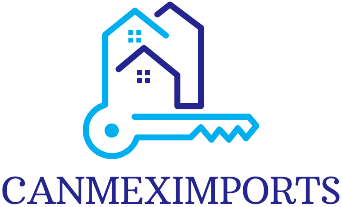Table of Contents
ToggleWhen it comes to investing in real estate, understanding rental yields can be the difference between cash flow and cash flow problems. Think of rental yield as the superhero of your property portfolio—it swoops in to save the day by showing how much income a property generates compared to its purchase price. It’s like finding a hidden treasure map that leads straight to your financial freedom.
Understanding Rental Yields
Rental yields play a crucial role in evaluating the performance of real estate investments. Determining these yields helps investors make informed financial decisions.
What Are Rental Yields?
Rental yield measures the income generated by a property compared to its purchase price. Calculating it involves dividing the annual rental income by the property’s cost, then multiplying by 100 to get a percentage. For example, if a property costs $200,000 and generates $20,000 in annual rental income, the yield is 10%. Investors use this metric to assess profitability, benchmark performance, and identify potential investment opportunities.
Importance of Rental Yields in Real Estate
Understanding rental yields aids in evaluating investment potential. High rental yields often signal strong cash flow and indicate a property’s ability to cover operating costs. Investors rely on these yields to compare various properties. Analyzing rental yields offers insights into local market conditions, guiding purchasing decisions. Properties with consistent or increasing yields tend to attract more investors, ensuring stable future returns.
Factors Influencing Rental Yields

Understanding the factors that influence rental yields is essential for investors looking to maximize their returns. These factors can vary significantly and play a crucial role in determining property performance.
Location and Its Impact
Location significantly influences rental yields. Properties in urban areas often command higher rents due to demand, leading to increased yields. Proximity to amenities like schools, public transport, and shopping centers attracts tenants and drives rental prices upward. Neighborhood trends also matter; gentrifying areas may see rapid increases in rental income, enhancing investment potential. Investors frequently analyze local market data to identify neighborhoods with growth potential, as these locations can provide better long-term returns.
Property Type Considerations
Property type affects rental yields significantly. Single-family homes often provide lower yields compared to multi-unit buildings. Demand for apartments tends to be high in dense urban neighborhoods, resulting in more competitive rental rates. Furthermore, the condition and age of a property can influence its attractiveness to tenants. It’s common for modern or recently renovated properties to achieve premium rents, thereby increasing overall yield. Investors consider these factors when evaluating potential properties, aiming to select those that align with their income goals and market conditions.
Market Trends and Economic Factors
Market trends and economic conditions directly impact rental yields. Interest rates, for instance, affect affordability; lower rates can lead to increased demand for rentals. Economic growth typically generates more jobs, resulting in higher rental demand and pushing prices upward. Conversely, economic recessions might reduce tenant affordability, leading to decreased rents. Staying informed about local economic indicators, such as employment rates and population growth, helps investors anticipate changing market dynamics. Analyzing historical data also enables better predictions of future yield trends, ensuring informed investment decisions.
Calculating Rental Yields
Calculating rental yields involves utilizing two specific formulas: gross and net rental yield. Both serve to assess a property’s performance and assist investors in making informed decisions.
Gross Rental Yield Formula
Gross rental yield represents the total income generated by a property before expenses. To calculate gross rental yield, take the annual rental income and divide it by the property’s purchase price. Multiply the result by 100 to convert it into a percentage. For example, an annual rental income of $24,000 on a property purchased for $300,000 yields a gross rental yield of 8%. This figure provides a quick overview of potential returns, yet does not account for expenses.
Net Rental Yield Formula
Net rental yield presents a more accurate picture of investment returns by including expenses. To find net rental yield, subtract annual expenses from the annual rental income. After calculating this net income, divide it by the property’s purchase price and multiply by 100 to derive the percentage. If the annual expenses amount to $6,000, the net rental yield from the previous example would be 6%. This approach gives investors a better understanding of their actual returns.
Examples of Calculating Rental Yields
Consider two properties for comparison. Property A generates an annual rental income of $30,000 with a purchase price of $400,000 and $5,000 in expenses. Gross rental yield equals 7.5%, and net rental yield calculates to 6.25%. Property B, on the other hand, has an annual income of $22,000 with a price of $250,000 and $3,000 in expenses. Gross rental yield is 8.8%, while net rental yield comes out to 7.6%. Such examples illustrate how calculations emphasize varying potential returns and guide investors in property selection.
Strategies to Improve Rental Yields
Improving rental yields involves multiple strategies that enhance income while managing costs effectively.
Renovations and Upgrades
Renovations boost property appeal and attract higher rents. Updating kitchens and bathrooms can significantly improve rental prices. Adding modern amenities, such as energy-efficient appliances, increases desirability. Fresh paint and curb appeal enhancements also make a property more attractive. Assessing which upgrades provide the best return on investment is critical. Investors should consider low-cost improvements with high impact. Properties in higher-demand areas might benefit from luxury features that justify premium rents.
Adjusting Rental Prices
Adjusting rental prices strategically maximizes rental income. Regularly revisiting market rates ensures competitiveness in pricing. Setting rents too low might lead to increased vacancy. Conversely, pricing too high can deter potential tenants. Implementing annual increases that align with market trends promotes steady income growth. It’s essential to evaluate local rental competition frequently. Offering limited-time incentives, such as reduced first-month rent, can attract tenants without a permanent drop in prices.
Effective Marketing Techniques
Effective marketing techniques reach a broader audience and attract qualified tenants. Utilizing online listings on popular platforms increases visibility significantly. High-quality photographs highlighting key property features enhance interest levels. Engaging descriptions, showcasing benefits and nearby amenities, can set a property apart. Social media marketing also enhances outreach, particularly for younger renters. Hosting open houses allows potential tenants to experience properties firsthand. Crafting a targeted marketing strategy tailored to the local demographic improves overall rental success.
Understanding rental yields is vital for any real estate investor aiming for financial success. By grasping how rental yields work and the factors influencing them, investors can make informed decisions that enhance their property portfolios.
Focusing on strategies to improve these yields can lead to increased cash flow and long-term stability. Whether through property upgrades or effective marketing, maximizing rental income is key to achieving investment goals.
Staying informed about local market trends and economic indicators will further empower investors to navigate the complex landscape of real estate, ultimately paving the way for a prosperous future.





